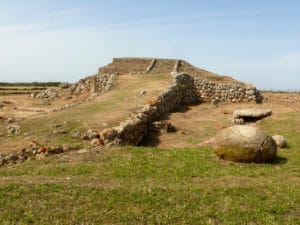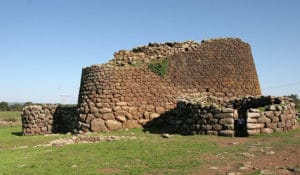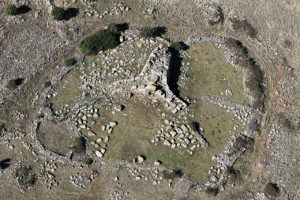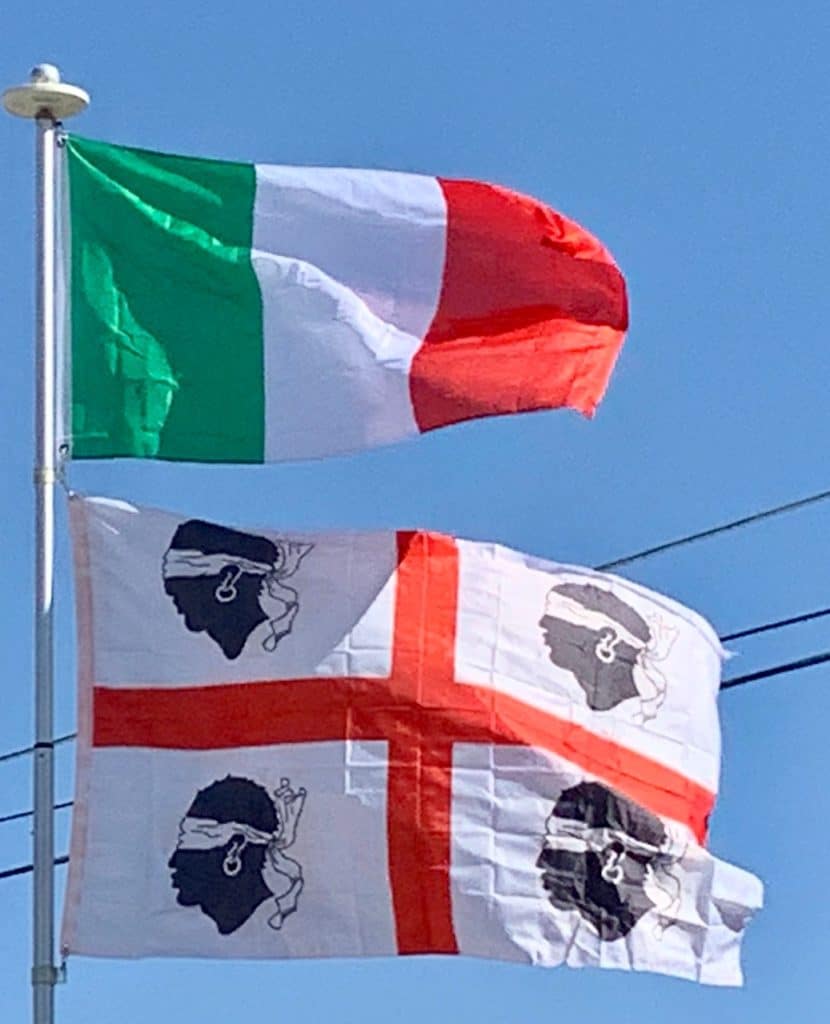
During the late Chalcolithic, the so-called Beaker culture, coming from various parts of Continental Europe, appeared in Sardinia. These new people predominantly settled on the west coast, where the majority of the sites attributed to them had been found. The Beaker culture was followed in the early Bronze Age by the Bonnanaro culture which showed both reminiscences of the Beaker and influences by the Polada culture.
As time passed, the different Sardinian populations appear to have become united in customs, yet remained politically divided into various small, tribal groupings, at times banding together against invading forces from the sea, and at others waging war against each other. Habitations consisted of round thatched stone huts.
Nuragic Civilization:
From about 1500 BC onwards, villages were built around a kind of round tower-fortress called nuraghe (usually pluralized as “nuraghes” in English and as nuraghi in Italian). These towers were often reinforced and enlarged with battlements. Tribal boundaries were guarded by smaller lookout Nuraghes erected on strategic hills commanding a view of other territories.

Today, some 7,000 Nuraghes dot the Sardinian landscape. While initially these Nuraghes had a relatively simple structure, with time they became extremely complex and monumental. The scale, complexity and territorial spread of these buildings attest to the level of wealth accumulated by the Nuragic Sardinians, their advances in technology and the complexity of their society, which was able to coordinate large numbers of people with different roles for the purpose of building the monumental Nuraghes.
The Nuraghes are not the only Nuragic buildings that stand in place, as there are several sacred wells around Sardinia and other buildings with religious purposes such as the Giants’ grave (monumental collective tombs) and collections of religious buildings that probably served as destinations for pilgrimage and mass religious rites (e.g. Su Romanzesu near Bitti).
At the time, Sardinia was at the center of several commercial routes and it was an important provider of raw materials such as copper and lead, which were pivotal for the manufacture of the time. By controlling the extraction of these raw materials and by trading them with other countries, the ancient Sardinians were able to accumulate wealth and reach a level of sophistication that is not only reflected in the complexity of its surviving buildings, but also in its artworks (e.g. the votive bronze statuettes found across Sardinia or the statues of Mont’e Prama).

According to some scholars, the Nuragic people(s) are identifiable with the Sherden, a tribe of the Sea Peoples.
The Nuragic civilization was linked with other contemporaneous megalithic civilization of the western Mediterranean, such as the Talaiotic culture of the Balearic Islands and the Torrean civilization of Southern Corsica. Evidence of trade with the other civilizations of the time is attested by several artifacts (e.g. pots), coming from as far as Cyprus, Crete, Mainland Greece, Spain and Italy, that have been found in Nuragic sites, bearing witness to the scope of commercial relations between the Nuragic people and other peoples in Europe and beyond.
Ancient History:
Around the 9th century BC the Phoenicians began visiting Sardinia with increasing frequency, presumably initially needing safe overnight and all-weather anchorages along their trade routes from the coast of modern-day Lebanon as far afield as the African and European Atlantic coasts and beyond. The most common ports of call were Caralis, Nora, Bithia, Sulci, and Tharros. Claudian, a 4th-century Latin poet, in his poem De bello Gildonico, stated that Caralis was founded by people from Tyre, probably in the same time of the foundation of Carthage, in the 9th or 8th century BC.
